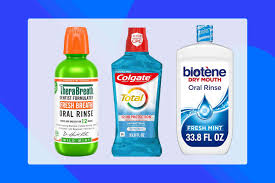Undergoing a tooth extraction is a common dental procedure, whether due to severe decay, infection, or overcrowding. While the surgery itself may be quick, proper aftercare is essential for a smooth and complication-free recovery. One of the most important steps in post-extraction care is maintaining oral hygiene — and choosing the best mouthwash after tooth extraction can make all the difference.
At The WDental Group , we often advise patients on how to care for their mouths following an extraction. In this article, we’ll explore the top mouthwashes recommended by dentists, what to look for when choosing one, and why using the right mouthwash matters during the healing process.
Why Using Mouthwash After Tooth Extraction Is Important
After a tooth is removed, a blood clot forms in the socket to protect the underlying bone and nerves. This clot is crucial for proper healing. However, bacteria from food particles and plaque can increase the risk of infection and even lead to a painful condition called dry socket , where the blood clot dislodges or dissolves too early.
Using an appropriate mouthwash after tooth extraction helps:
- Keep the extraction site clean
- Reduce bacterial load in the mouth
- Promote healing and tissue regeneration
- Minimize bad breath and discomfort
- Prevent complications like infections or dry socket
It’s important to avoid alcohol-based mouthwashes immediately after extraction, as they can irritate the wound and delay healing.
When Should You Start Using Mouthwash After Extraction?
Your dentist will typically recommend waiting 24 hours before gently rinsing your mouth with a prescribed or mild mouthwash. This allows the initial blood clot to form undisturbed.
After the first day, you may begin using a non-alcoholic, antimicrobial mouth rinse as part of your recovery routine — usually 2–3 times per day or as directed by your dentist.
Top 5 Best Mouthwashes Recommended After Tooth Extraction
Here are some of the most trusted and effective options that are gentle yet powerful enough to support healing:
1. Chlorhexidine Gluconate (Prescription Rinses)
- Why It’s Recommended: Often prescribed by dentists, chlorhexidine is an antimicrobial rinse that effectively reduces bacteria and prevents infections.
- Best For: First few days post-surgery under professional guidance.
- Note: Prolonged use may cause staining, so follow your dentist’s instructions carefully.
2. TheraBreath Healthy Gums Rinse
- Why It’s Recommended: Alcohol-free, sulfate-free, and formulated with natural ingredients like green tea extract and sodium fluoride.
- Best For: Soothing gums and reducing inflammation while supporting long-term oral health.
3. Colgate Peroxyl Mouth Sore Rinse
- Why It’s Recommended: Contains hydrogen peroxide to gently cleanse the mouth and promote healing.
- Best For: Alleviating irritation and keeping the surgical area clean without harsh chemicals.
4. Listerine Zero (Alcohol-Free Version)
- Why It’s Recommended: Offers the same germ-fighting power as regular Listerine but without alcohol, making it suitable for sensitive mouths.
- Best For: Maintaining fresh breath and daily oral hygiene during recovery.
5. Biotene Dry Mouth Oral Rinse
- Why It’s Recommended: Designed for individuals with dry mouth, which can occur after anesthesia or medication use.
- Best For: Keeping the mouth moist and preventing bacterial buildup during healing.
What to Look for in a Post-Extraction Mouthwash
When selecting the best mouthwash after tooth extraction , keep these factors in mind:
- ✅ Alcohol-Free : Avoid alcohol-based formulas to prevent irritation.
- ✅ Antimicrobial Properties : Helps reduce harmful bacteria and prevent infection.
- ✅ Gentle Formula : Look for soothing ingredients like aloe vera or chamomile.
- ✅ Dentist Approved : Always follow your dentist’s recommendations, especially if prescribed a specific rinse.
- ✅ Fluoride Content : Can help strengthen remaining teeth and prevent decay.
Natural Alternatives: Saltwater & Herbal Rinses
In addition to over-the-counter mouthwashes, many dentists recommend a warm saltwater rinse during the first 24–48 hours post-extraction. Saltwater is gentle, natural, and helps keep the area clean without causing irritation.
Some people also opt for herbal rinses containing chamomile, calendula, or sage, which have anti-inflammatory and healing properties. However, always consult your dentist before trying alternative remedies.
How to Use Mouthwash After Tooth Extraction
To ensure safe and effective use:
- Wait at least 24 hours after the extraction.
- Gently swish the mouthwash around your mouth for 30 seconds.
- Avoid vigorous rinsing or spitting — let the liquid drain naturally.
- Use only as directed by your dentist, especially if using prescription-strength rinses.
Final Thoughts
Choosing the best mouthwash after tooth extraction plays a vital role in your recovery. The right rinse not only supports healing but also protects your oral health during a vulnerable time.
For more information on post-operative dental care and product recommendations, visit The WDental Group , where our team of experienced dentists provides personalized care tailored to your needs.
Remember, every step you take during recovery counts — and the right mouthwash can make a world of difference.



